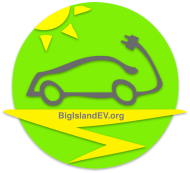We recently came across the Wall Street Journal’s ‘The Electric Vehicle Road Test‘, a video report on a global experiment involving several of the company’s reporters. They shared experiences with ownership – good and bad.
What the EV Newbies Experienced…
The main theme expressed was concern with charging infrastructure – poor availability (particularly outside of urban centers), slow charging, inconsistent charger reliability, and the diversity of interfaces (charger functionality, subscription requirements, payment flows). Highlights include the general driving experience (fun, quick, quiet), the sophistication and ubiquity of reliable charging infrastructure in China, and the quality of the Tesla charging experience.
This video is worth a viewing – it will help you understand the various EV adoption levers and the barriers that we must be concerned about.
What about Hawaii?
Hawaii electric vehicle owners face similar challenges with public charging infrastructure – reliability issues due to deferred maintenance, insufficient charging station network, and poor user experience due to the lack of payment standards and variation in the charger interfaces. Our islands have special considerations that warrant island-specific solution approaches, e.g., some have a large number of condo and apartment residents, some have really long driving distances, and some have a high number of electric vehicles competing for chargers.
Fortunately, our driving distances are generally short and newer electric vehicles now have over 200 miles of range per charge so home charging will suffice for those fortunate enough to have a home charger. These factors (long range electric vehicles and relatively short commutes) help our electric vehicles owners manage despite the inadequate charging infrastructure. However, there is no doubt that our transition to emission-free transportation will be hindered if the charging infrastructure gap is not addressed. As adoption of electric vehicles increases across the state, the competition for public charging stations will become more problematic.
In a later post, we’ll discuss what we are doing to improve our charging infrastructure. In the meantime, here’s the Wall Street Journal’s video:

